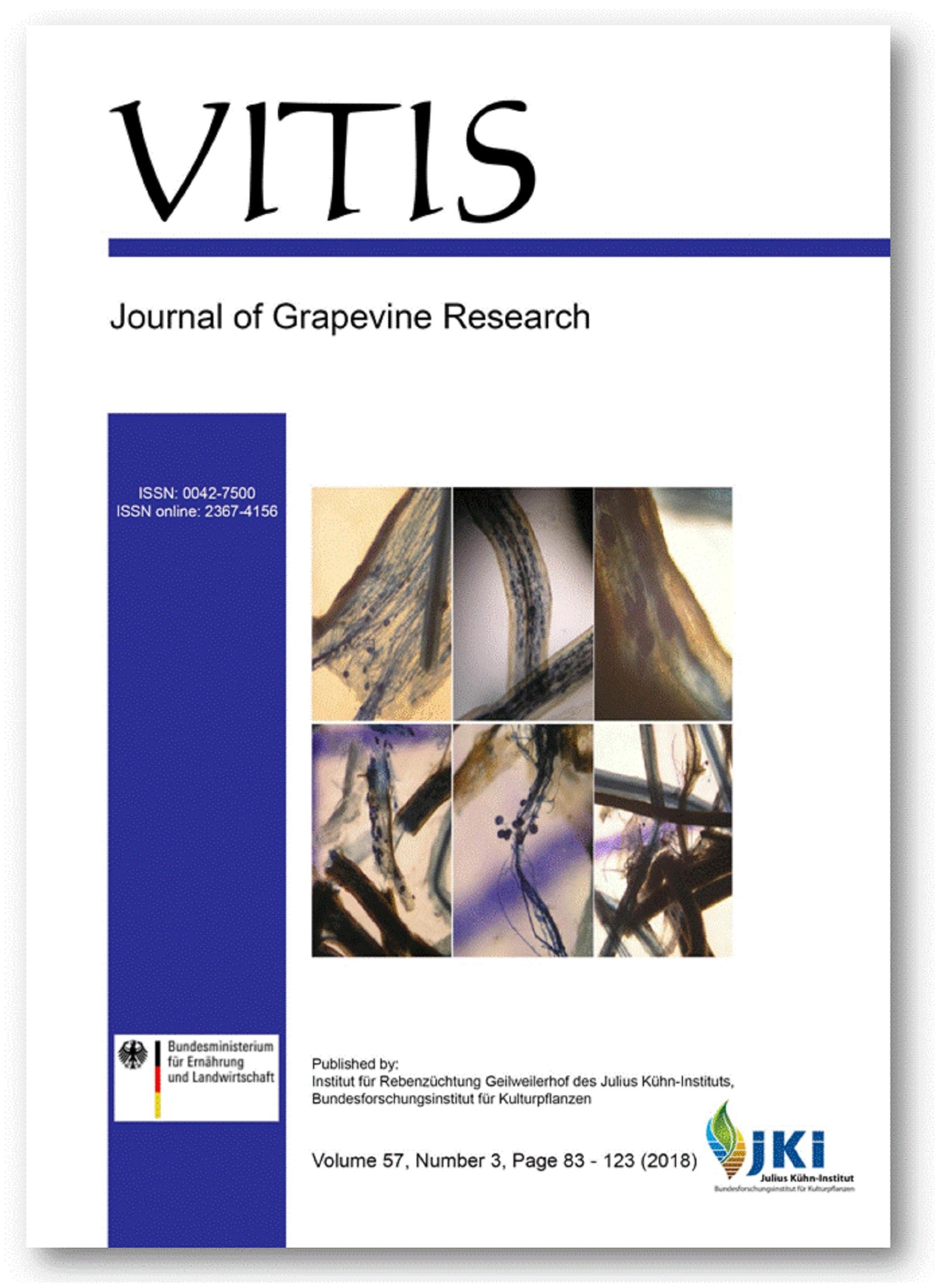Grapevine breeding under climate change: Applicability of a molecular marker linked to véraison
DOI:
https://doi.org/10.5073/vitis.2018.57.119-123Keywords:
berry ripening; climate change; molecular marker; phenology; Vitis vinifera L.Abstract
Viticulture is of high economic value. Traditional grapevine cultivars (Vitis vinifera L.) are used in adaptation to the climatic conditions from Northern to Southern European growing areas. However, the recent trend of global warming causes quality deficits due to a shift of the plant's development to earlier times in the year. As a consequence, premature ripening happens under warm temperatures and interferes with the balanced accumulation of sugars, acids, aroma profiles and berry coloration. Modern grapevine breeding is challenged to include the ripening behavior as an important trait (besides pathogen resistance and other characteristics) into the development of novel cultivars well suited for sustainable viticulture. Breeders nowadays apply molecular markers to follow the introgression of desired traits on the genetic level. Previous work has identified a molecular tag on grapevine chromosome 16 strongly linked to the time of véraison, the start of the second phase of berry ripening, in a segregating cross population. In this study we analyzed the transferability of this marker to a set of 36 grapevine cultivars commonly used in German viticulture. Association analysis verified the predictive character of the time point of véraison for maturation time and confirmed the diagnostic potential of the véraison-linked marker in this extended set of cultivars.
Downloads
Published
Issue
Section
License
The content of VITIS is published under a Creative Commons Attribution 4.0 license. Any user is free to share and adapt (remix, transform, build upon) the content as long as the original publication is attributed (authors, title, year, journal, issue, pages) and any changes to the original are clearly labeled. We do not prohibit or charge a fee for reuse of published content. The use of general descriptive names, trade names, trademarks, and so forth in any publication herein, even if not specifically indicated, does not imply that these names are not protected by the relevant laws and regulations. The submitting author agrees to these terms on behalf of all co-authors when submitting a manuscript. Please be aware that this license cannot be revoked. All authors retain the copyright on their work and are able to enter into separate, additional contractual arrangements.



